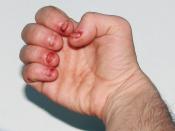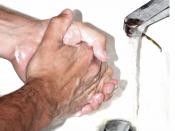Summary of Data/EvidenceDefinitions:Obsessive-Compulsive Disorder: A psychological mental disorder characterized by persistent obsessions, compulsions, or both. It is usually referred to as OCD.
Obsession: ÃÂa recurrent and intrusive thought, feeling, idea, or sensationÃÂ (Medical NP).
Compulsion: ÃÂa conscious, recurrent pattern of behavior a person feels driven to performÃÂ (Medical NP).
Symptoms and Diagnosis:There are several tests and tools that psychiatrists use to diagnose a person with Obsessive-Compulsive Disorder. The most notable tests and guidelines for accurate diagnosis are the Diagnostic and Statistic Manual of Mental Disorders, Fourth Edition (more commonly referred to as the DSM-IV), the Yale-Brown Obsessive-Compulsive Scale, and the Obsessive-Compulsive Disorder Screener (BrainPhysics NP). Another tool used to judge how extensive OCD is in a patient is a checklist of common symptoms.
The DSM-IV Diagnostic Criteria for OCD: (Anxiety and Stress NP)A. Either obsessions or compulsions:Obsessions as defined by (1), (2), (3), and (4):1.recurrent and persistent thoughts, impulses, or images that are experienced, at some time during the disturbance, as intrusive and inappropriate and that cause marked anxiety or distress2.the
thoughts, impulses, or images are not simply excessive worries about real-life problems3.the person attempts to ignore or suppress such thoughts, impulses, or images, or to neutralize them with some other thought or action4.the person recognizes that the obsessional thoughts, impulses, or images are a product of his or her own mind (not imposed from without as in thought insertion)Compulsions as defined by (1) and (2):1.repetitive behaviors (e.g., hand washing, ordering, checking) or mental acts (e.g., praying, counting, repeating words silently) that the person feels driven to perform in response to an obsession, or according to rules that must be applied rigidly2.the behaviors or mental acts are aimed at preventing or reducing distress or preventing some dreaded event or situation; however, these behaviors or mental acts either are not...


